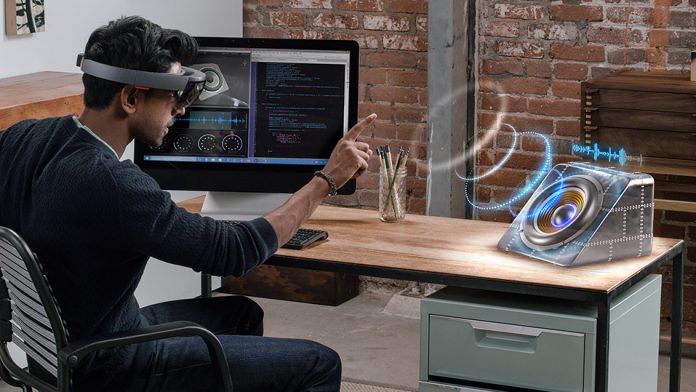We already know Microsoft is heavily invested in mixed reality. So much so, Windows Mixed Reality could be the future of the platform. The Microsoft patent into brain-computer interfaces is a patent for a brain-sensing system. Such as system would improve app use through gesture-based systems on mixed reality headsets.
The patent in question is called Changing an application state using neurological data‘. Microsoft’s proposal focuses on using electroencephalography (EEG) nodes to measure brain activity. EEG is usually used in medical practices, but Microsoft sees use in the tech realm.
In its patent, the company describes how the technology could work in Mixed Reality, specifically for HoloLens. It is worth noting the patent is from 2016, so this has been in development for some time. However, it was only granted as a filed patent this week.
EEG with gesture controls is not a Microsoft patent exclusive by any means. Although, the company is exploring ways to integrate the technology in more efficient ways. Specifically, Microsoft wants users to be able to interact with applications using their minds. Using 3D modelling software, user actions could create different results depending the application state.
According to a patent, users could change the application state through their mind. AI will contribute to the ability and is already working to make apps more predictive. Microsoft believes artificial intelligence will be able to detect when a user wants to change app state.
“In some embodiments, the state changes are performed with detected neurological user intention data associated with a particular operation of a particular application state, and changing the application state so as to enable execution of the particular operation as intended by the user and without requiring a user to manually change the application state,” the patent reads.
“In some embodiments, the application state is automatically changed to align with the intended operation, as determined by received neurological user intent data.”
Gestures and Mind
However, rather than replacing gestures through mind control, Microsoft envisions a combination system. The machine would detect neurological intentions through a gesture, allowing more efficient app state movement.
A hint that Microsoft has a HoloLens-like system in mind is its suggestion that the system works in tandem with gesture controls, rather than necessarily using brain waves to replace gestures.
While it seems the company is focusing the patent development on HoloLens, it has wider compatibility. Indeed, Microsoft says the mind-control system would work on smartphones and PCs.






